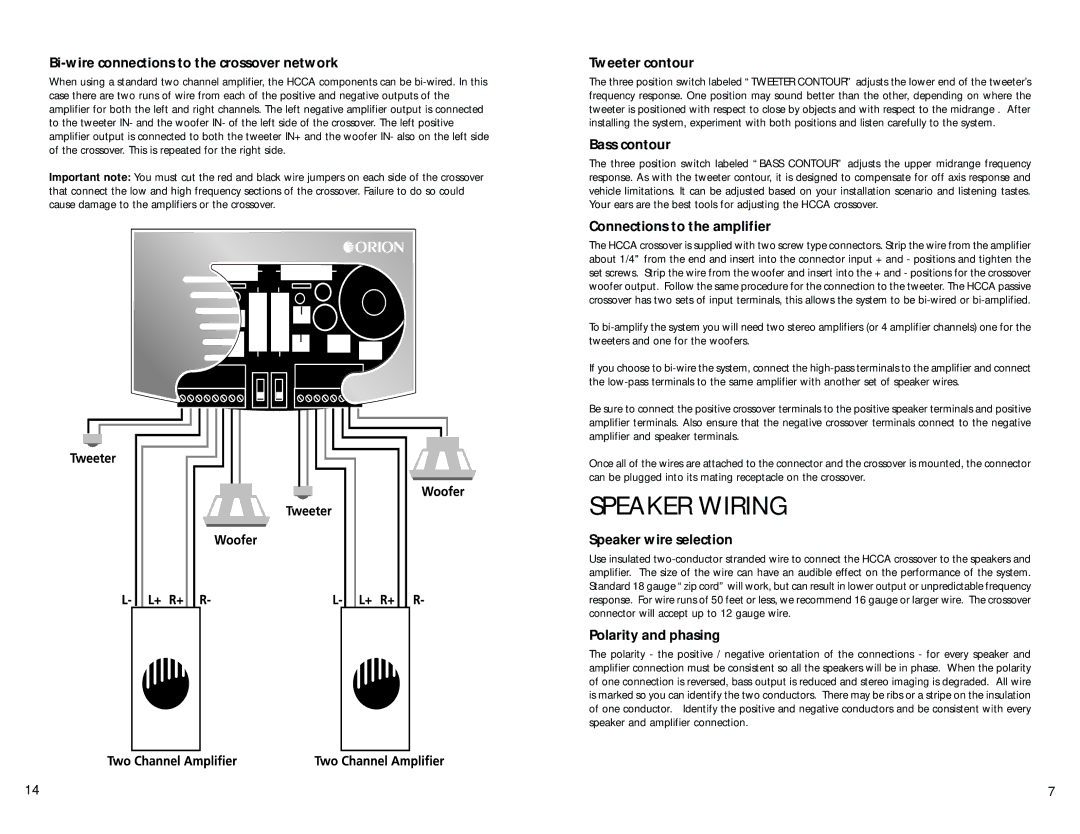
Bi-wire connections to the crossover network
When using a standard two channel amplifier, the HCCA components can be
Important note: You must cut the red and black wire jumpers on each side of the crossover that connect the low and high frequency sections of the crossover. Failure to do so could cause damage to the amplifiers or the crossover.
Tweeter contour
The three position switch labeled “TWEETER CONTOUR” adjusts the lower end of the tweeter’s frequency response. One position may sound better than the other, depending on where the tweeter is positioned with respect to close by objects and with respect to the midrange . After installing the system, experiment with both positions and listen carefully to the system.
Bass contour
The three position switch labeled “BASS CONTOUR” adjusts the upper midrange frequency response. As with the tweeter contour, it is designed to compensate for off axis response and vehicle limitations. It can be adjusted based on your installation scenario and listening tastes. Your ears are the best tools for adjusting the HCCA crossover.
Connections to the amplifier
The HCCA crossover is supplied with two screw type connectors. Strip the wire from the amplifier about 1/4" from the end and insert into the connector input + and - positions and tighten the set screws. Strip the wire from the woofer and insert into the + and - positions for the crossover woofer output. Follow the same procedure for the connection to the tweeter. The HCCA passive crossover has two sets of input terminals, this allows the system to be
To
If you choose to
Be sure to connect the positive crossover terminals to the positive speaker terminals and positive amplifier terminals. Also ensure that the negative crossover terminals connect to the negative amplifier and speaker terminals.
Once all of the wires are attached to the connector and the crossover is mounted, the connector can be plugged into its mating receptacle on the crossover.
SPEAKER WIRING
Speaker wire selection
Use insulated
Polarity and phasing
The polarity - the positive / negative orientation of the connections - for every speaker and amplifier connection must be consistent so all the speakers will be in phase. When the polarity of one connection is reversed, bass output is reduced and stereo imaging is degraded. All wire is marked so you can identify the two conductors. There may be ribs or a stripe on the insulation of one conductor. Identify the positive and negative conductors and be consistent with every speaker and amplifier connection.
14 | 7 |
